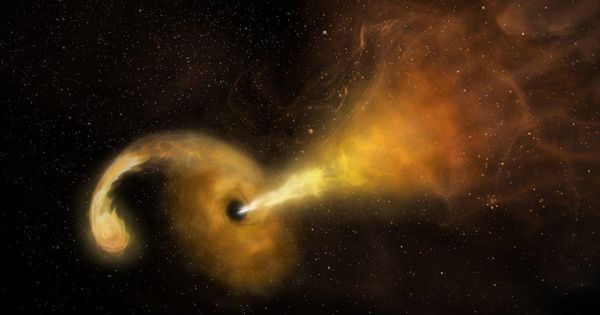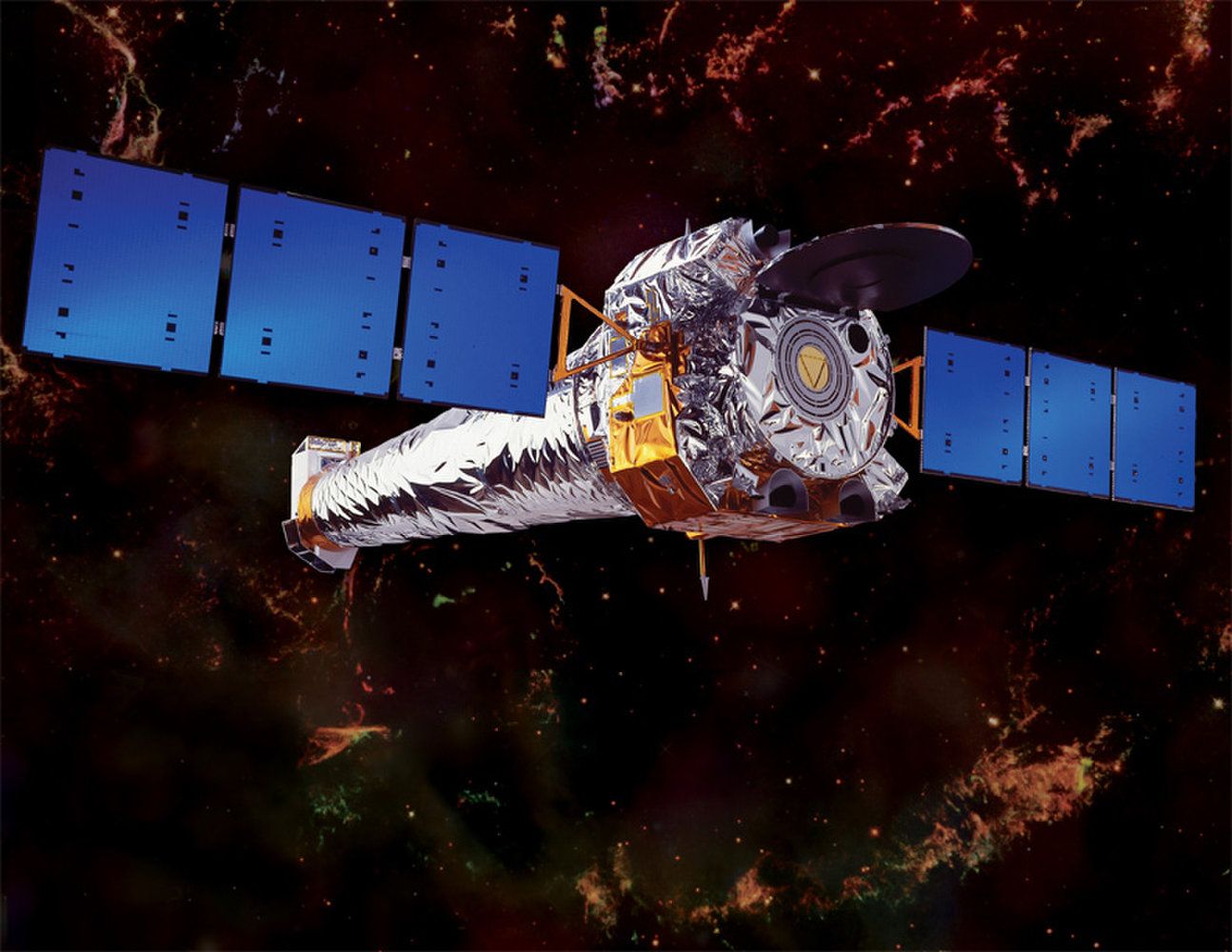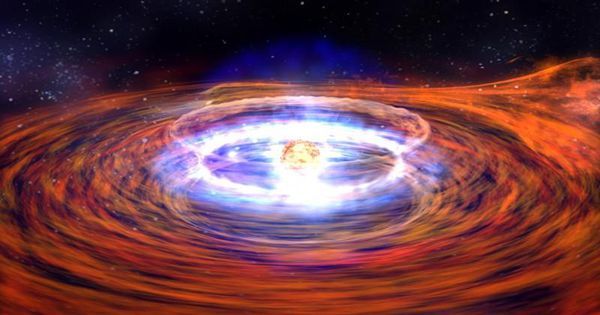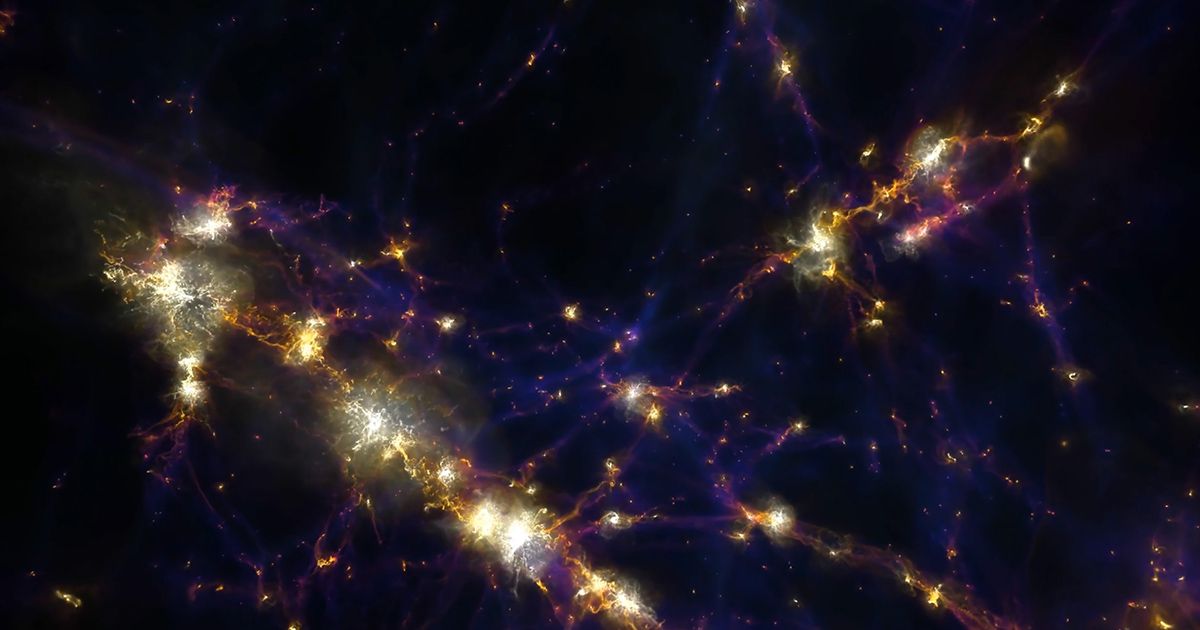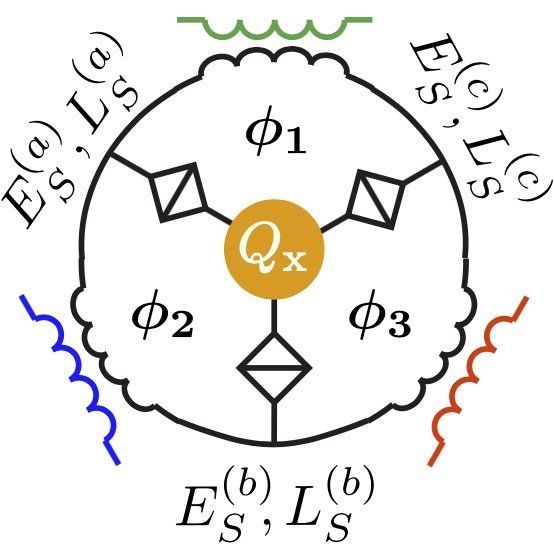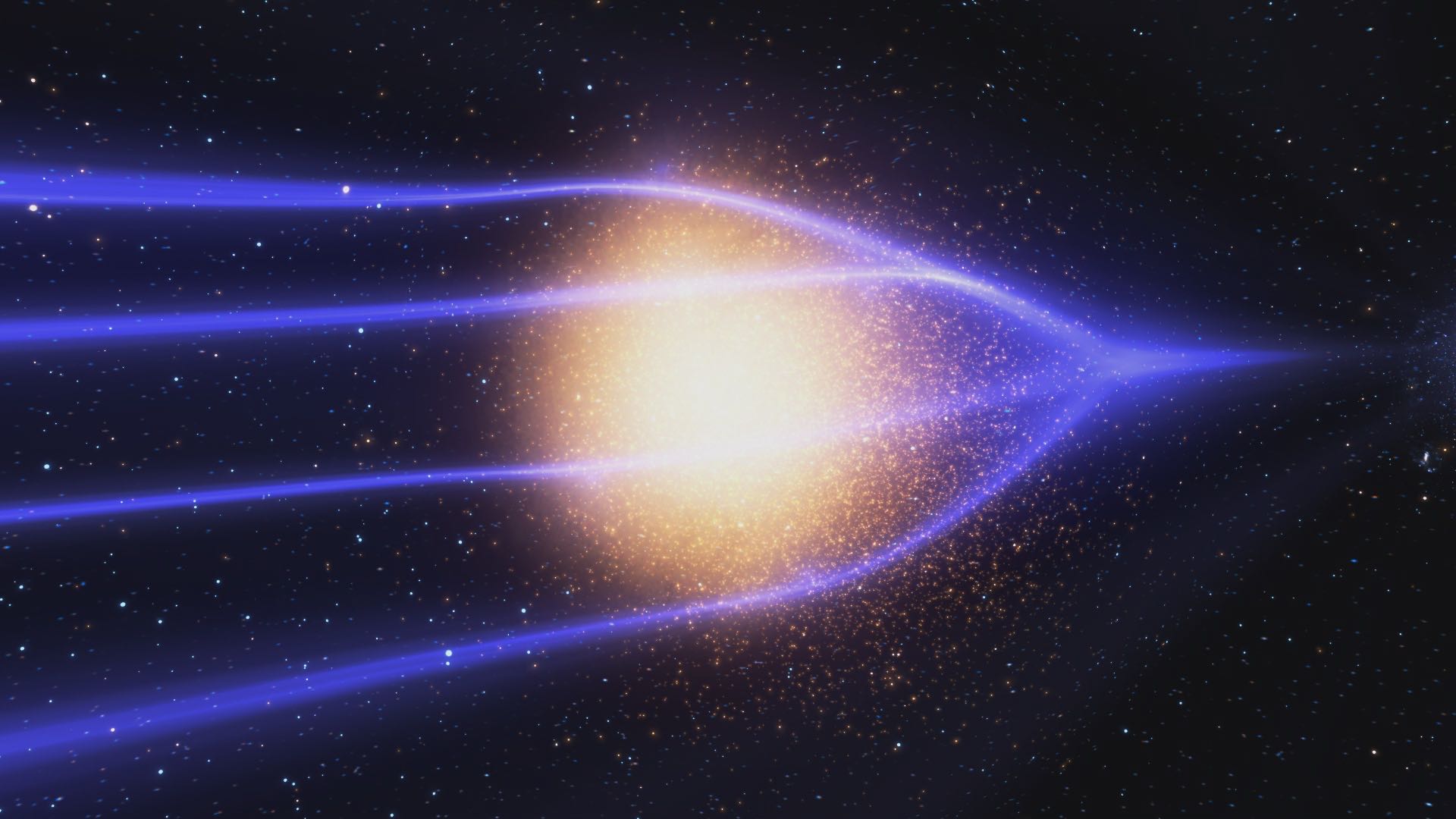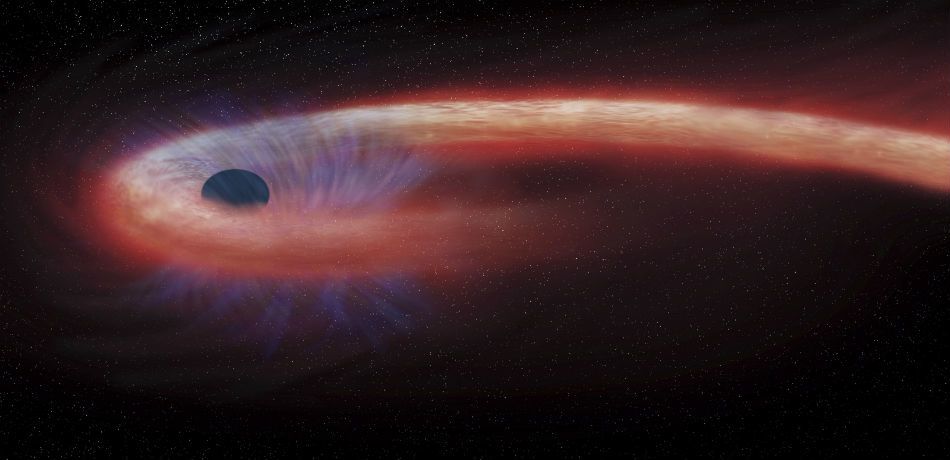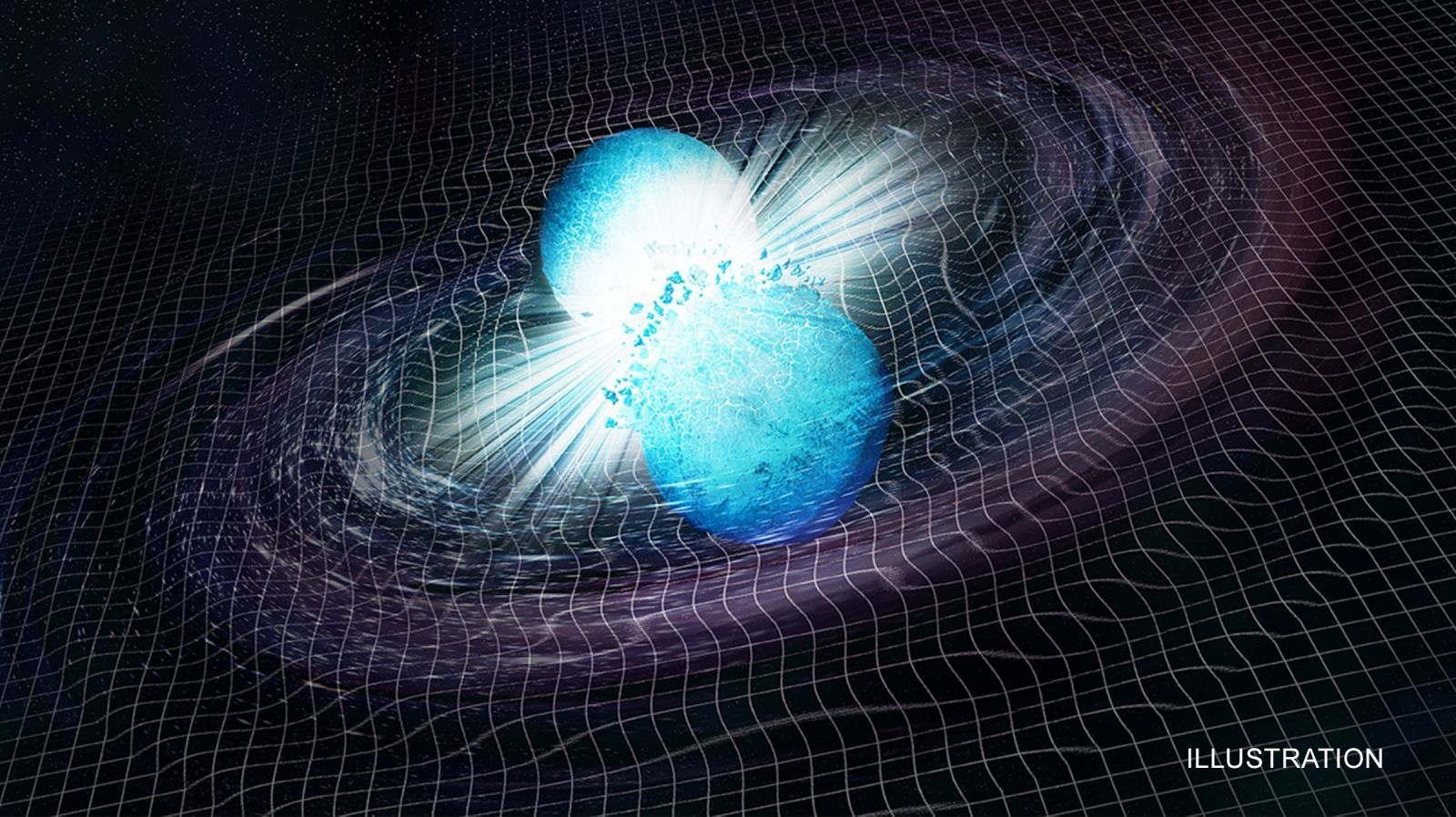
On August 17, 2017, astronomers witnessed an extraordinary celestial event: a collision between two ultra-dense neutron stars. Scientists had never seen anything quite like it, leading to much speculation as to what happened in the wake of the monumental encounter. New research now suggests the collision produced a black hole—but if true, it would be the lightest black hole known to science.
The thought of two neutron stars smashing into each other is nothing short of astounding. Neutron stars are stellar corpses—the remnants supernovae—and they cram a huge amount of mass into a ludicrously small sphere. Typical neutron stars are only as wide as a large city, but they’re about a half million times more massive than Earth, or about two solar masses.
A collision of two neutron stars may seem unlikely, but it happened. Data from the Laser Interferometer Gravitational Wave Observatory (LIGO) and the Virgo interferometer showed that shit got completely wild in the moments leading up to the colossal smash up. For a period of about two minutes, the binary pair spiraled around each other with unimaginable speed, spewing gravitational waves into the cosmic void. Each orbit brought the pair closer together, culminating in a collision that produced a giant shockwave.
Continue reading “Colliding Neutron Stars Likely Birthed a Baby Black Hole” »
